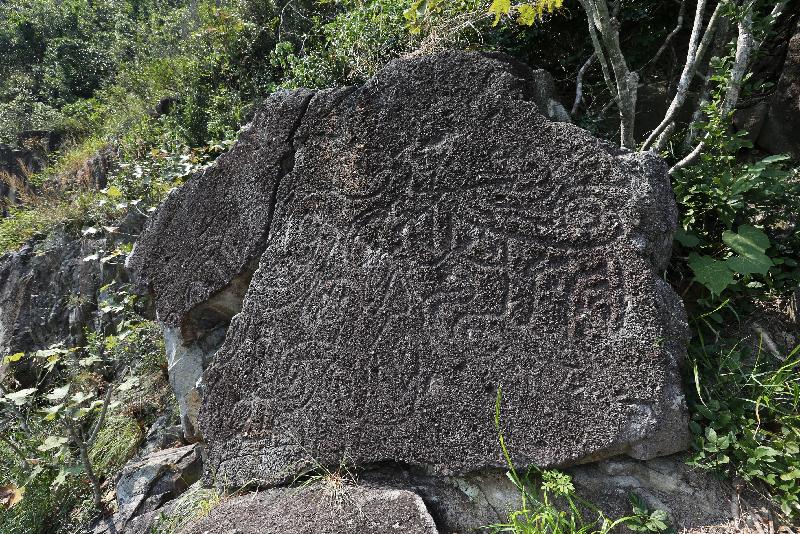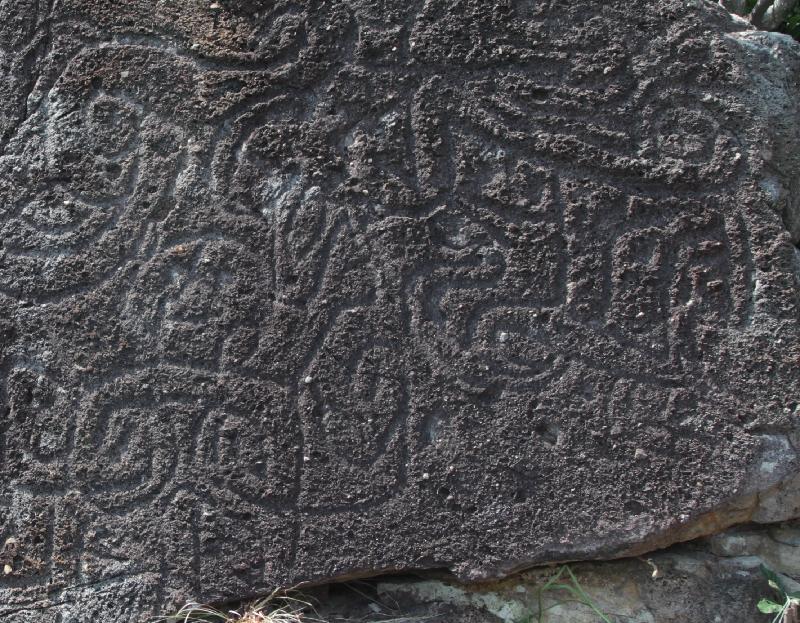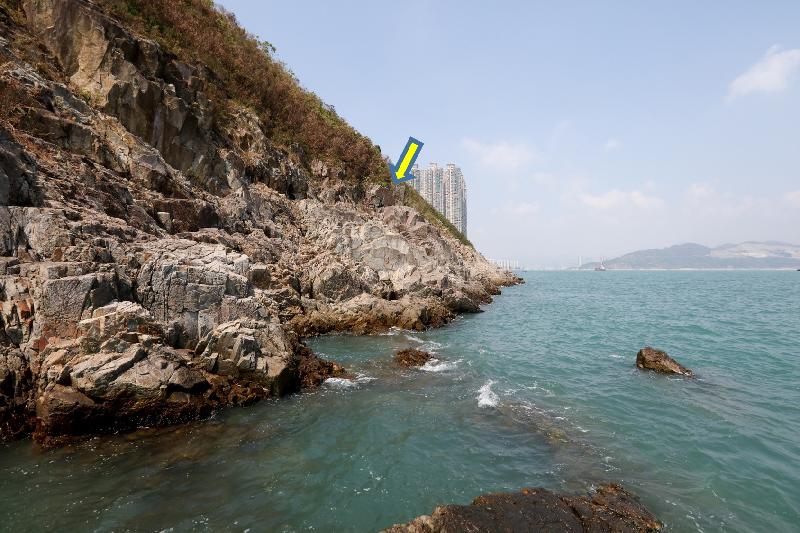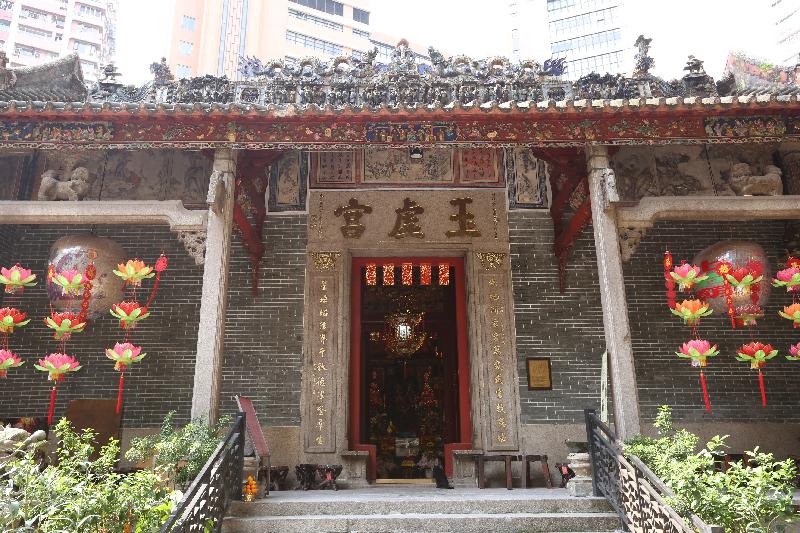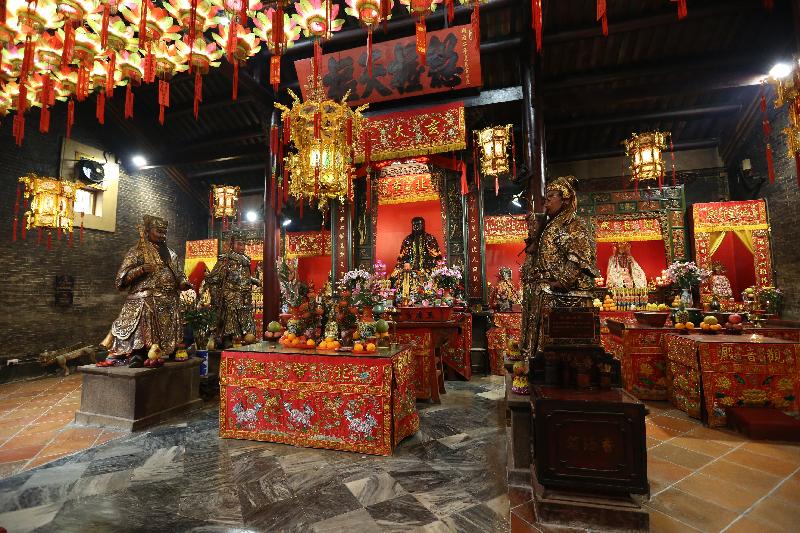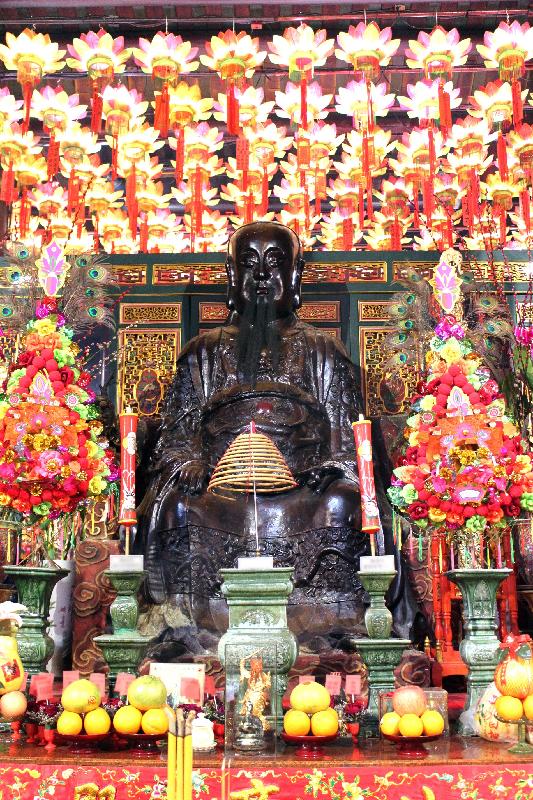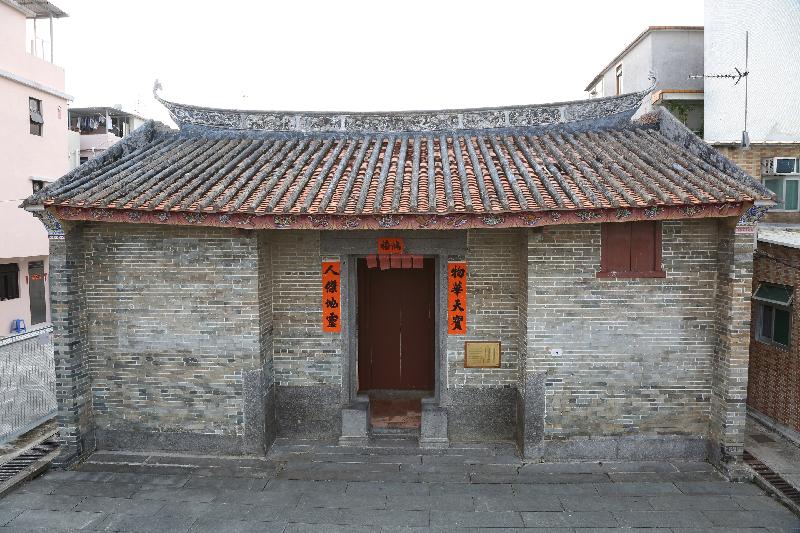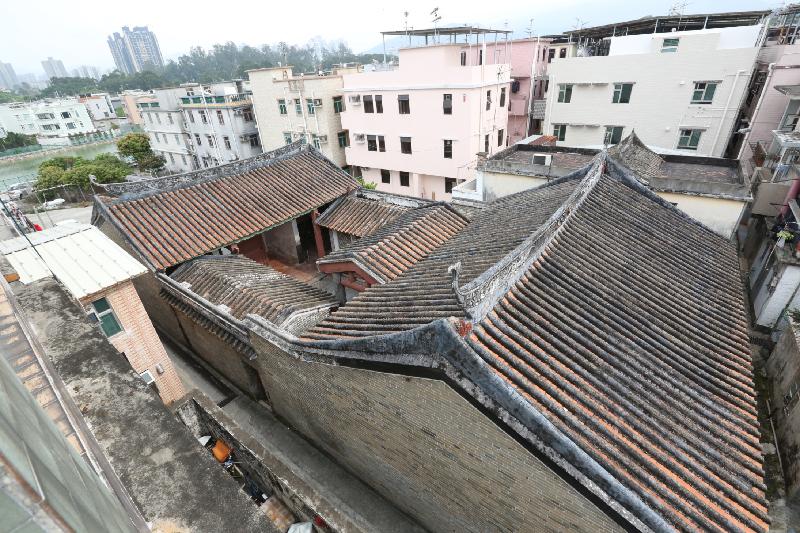Three historic items declared as monuments (with photos)
The Government today (October 25) announced that the Antiquities Authority (i.e. Secretary for Development) has declared the rock carving at Cape Collinson in Eastern District, Yuk Hui Temple in Wan Chai and Hau Mei Fung Ancestral Hall in Sheung Shui as monuments under the Antiquities and Monuments Ordinance. The notice of the declaration was gazetted today.
The rock carving at Cape Collinson is located at about 11 metres above sea level on a cliff at Cape Collinson in Eastern District. Its discovery was reported to the Antiquities and Monuments Office in October 2018 by a member of the public. The rock carving measures about 160 centimetres in height and 260cm in width, a size similar to the rock carving on Tung Lung Chau, the largest rock carving found in Hong Kong. Its patterns, composed of geometric and curved designs, closely resemble those on Bronze Age artefacts and the other eight rock carvings in Hong Kong, which were declared monuments during the 1970s and 1980s, in particular the rock carvings at Big Wave Bay and Tung Lung Chau, which are in close proximity. As the rock carving is located on a cliff, a warning to visitors has been put up near the site.
Yuk Hui Temple was built by local residents of Wan Chai for the worship of Pak Tai. The temple serves as an important historic landmark of the early development of Wan Chai and an icon of the local community's identity. The temple consists of the central main building and two side buildings. The main building was built in the first year of the Tongzhi reign (1862) of the Qing dynasty, and completed in 1863. The characters "Yuk Hui Temple" inscribed on the granite lintel of the main entrance were written by Zhang Yutang, the then Commodore of the Dapeng Brigade stationed at the Kowloon Walled City. The building attached to the temple on its left was originally a communal hall. The building on its right was a school.
The main structure is a two-hall, three-bay building with outstanding architectural features. A large bronze statue of Pak Tai, which bears an inscription marking the 31st year of the Wanli reign (1603) of the Ming dynasty, is enshrined in the pavilion of the main building. Exquisite historic Shiwan ceramic decorations, including figurines portraying Chinese folk stories, can be found on the main ridge and gabled corner walls of the main building's entrance hall. It is noteworthy that the completion year of the temple was inscribed on a ridge purlin of the entrance hall, which is rarely seen in traditional Chinese buildings in Hong Kong.
Hau Mei Fung Ancestral Hall in Kam Tsin, Sheung Shui was built around the late 18th century to commemorate Hau Jui-fei (1634-1688), alias Hau Mei-fung, a student of the Imperial Academy, by his great grandson Hau Cheuk-wan, who obtained the degree of juren in the 53rd year of the Qianlong reign (1788) of the Qing dynasty. The ancestral hall represented the social and economic status of the Mei-fung branch of the Hau clan. Since its establishment, it has been mainly used as a family ancestral hall for worshipping ancestors and dealing with matters concerning the Mei-fung branch.
The ancestral hall is a typical Qing vernacular two-hall, three-bay building. The rear hall is fronted by a porch with a humpbacked roof, which is rarely seen in traditional Chinese buildings in Hong Kong. The decorative plastered relief and sculptures on the main ridges and wall friezes are exquisite. Ornate wood carvings of auspicious animals, flowers, geometric patterns and Chinese folk stories can be found on the timber structures and the ancestral shrine.
Information on the three monuments is available at the heritage conservation website of the Development Bureau (www.heritage.gov.hk).
